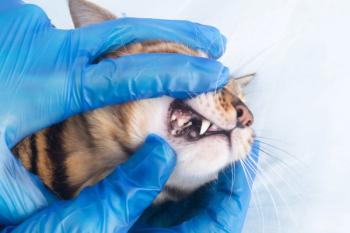
Navigating a quick fix: Updated guidelines for spay-neuter programs
These new and improved guidelines will help shelter veterinarians and non-shelter veterinarians alike.
The Association of Shelter Veterinarians' Veterinary Task Force to Advance Spay-Neuter has updated their guidelines, initially published in 2008, to help ensure a high quality of care for all patients in spaying and neutering through standardized recommendations. These standards not only give spay-neuter clinics a target to shoot for, but also give support for how they should be proceeding.
What you really need to know
Spay-neuter programs have been proven to significantly alter the number of pets euthanized each year in the United States. Task force member Philip Bushby, DVM, MS, DACVS, says that dogs and cats both live longer when they have been spayed or neutered. In a shelter environment, it is imperative to make sure that all patients have been altered before leaving the facility in order to reduce pet overpopulation. Non-shelter veterinarians can benefit from these new spay-neuter guidelines as well. The guidelines are appropriate for anyone who performs spay-neuter: veterinarians in high-volume spay-neuter clinics, in shelter and in private practice.
Into the details...
Dr. Bushby says the number of animals euthanized in shelters has decreased greatly, from 20 million in the 1970s to only 3 to 4 million today, and he thinks this positive change is, in part, due to low-cost spay-neuter programs. Programs such as this are created with the purpose of spaying and neutering a high number of pets quickly.
According to Dr. Bushby, the concern regarding spay-neuter clinics of low quality of care is unfounded. The new and updated guidelines combine the expertise of 20 veterinarians with ample experience in surgery, spay-neuter practice, anesthesia and small animal internal medicine. Programs that meet these guidelines are providing an excellent quality of care.
Update highlights
From before the pet is spayed or neutered to after the procedure is done, the guidelines cover every step of the process regarding the pet as well as the veterinary staff involved. Highlights include:
• Transport of animals may be required and should include proper containment, identification and periodic monitoring.
• Record-keeping should always comply with federal, state and local laws.
• Vaccinations should be done before the day of surgery. If that is not possible, day-of-surgery vaccination is safe and acceptable when necessary. Vaccine procedures should also follow state and local regulations and guidelines established by the American Association of Feline Practitioners and the American Animal Hospital Association.
• Patient housing should be designed to decrease patient stress and meet the needs of the pets' comfort. Animals should be individually identified, and housing should be carefully disinfected.
• Infectious disease control should be a priority, and all patient should be examined for their overall health as well as separated accordingly. Basic cleanliness protocols should be maintained between patient appointments. An effort should be made to complete surgery on apparently healthy patients first, and any patients with suspected early signs suggestive of contagious disease should be scheduled last.
• Standard emergency protocols should be in place, with staff and volunteers trained in emergency management and cardiopulmonary resuscitation.
• The decision of whether or not a patient with a mild infection can undergo a surgical procedure must be made by the veterinarian. If an animal is mildly ill, the veterinarian must weigh the benefits of proceeding with the possibility of not having another opportunity to neuter the animal.
• Patients should be examined prior to anesthesia and surgery.
• Intubation is not always necessary when balanced anesthesia is obtained by using injectable drug protocols. In an emergency situation, someone skilled at intubation must be accessible.
• Monitoring of patients undergoing surgery and pain coverage protocols are essential for these patients.
• All surgical instruments must be sterile. And patients should be prepped for all abdominal procedures. Surgical caps and masks are required at minimum. Surgical hand and arm scrub must be used. Single-use sterile gloves are required for abdominal surgery.
• Surgical procedures similar to those used in general practice and even pediatric procedures are warranted in these cases for patients between the ages of 6 and 16 weeks. According to Dr. Bushby, shelter patients are considered an “at risk” population, and sterilization should be prioritized above other controversial issues.
• All suture material should be absorbable or inert and must be single-use with no sharing among patients.
• Permanent marking is recommended such as a tattoo to identify altered animals. Ear tipping is a good option for identifying neutered cats that is used by many trap and release programs.
• Prophylactic antibiotics should not be necessary in apparently healthy patients due to quick procedures.
• All patients should be recovered in a systematic fashion using standardized operating procedures and checklists. Make sure the safety of staff is a priority as well.
The Association of Shelter Veterinarians' 2016 Veterinary Medical Care Guidelines for Spay-Neuter Programs. J Am Vet Med Assoc 2016;249:165-188.
Link to article:
Newsletter
From exam room tips to practice management insights, get trusted veterinary news delivered straight to your inbox—subscribe to dvm360.






